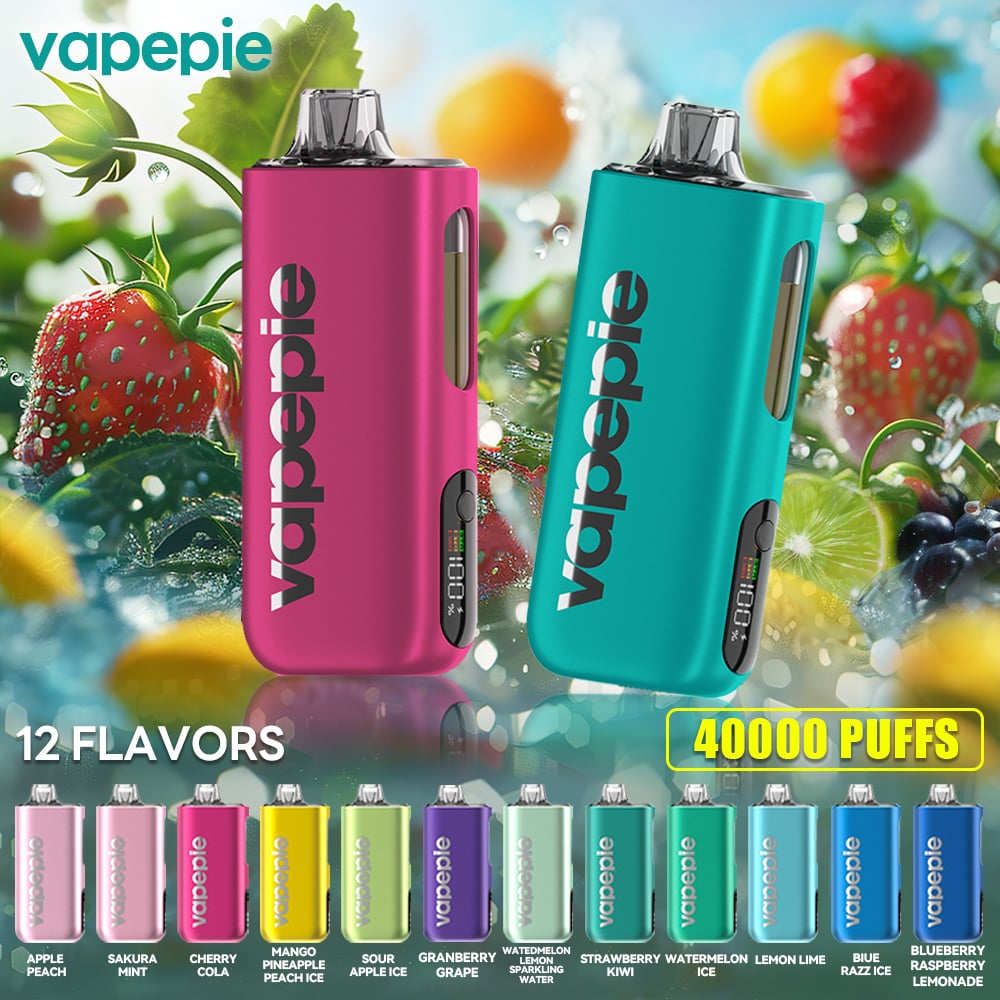
ARE YOU OF LEGAL VAPE AGE?
Please confirm that you are of legal age to purchase vaping products to access our site.

Please confirm that you are of legal age to purchase vaping products to access our site.
Some items are no longer available. Your cart has been updated.
This discount code cannot be used in conjunction with other promotional or discounted offer.
Looking back from the vantage point of 2025, the development trajectory of the electronic cigarette industry reveals a clear "cyclical rhythm." As early reliance on channel expansion and SKU bombardment in a rough-and-tumble growth model hits its ceiling, consumers' threshold for "novelty" rises due to product homogenization. Meanwhile, regulatory policies shift from "vague probing" to "precise standardization." The entire vape industry is finally bidding farewell to its "wild growth" adolescence, with VAPEPIE striding boldly into a new cycle powered by technological innovation at its core.

This quiet revolution is reshaping the underlying code of the electronic cigarette sector—from R&D logic and competitive barriers to cost structures and supply chain ecosystems.
In recent years, stories of "one blockbuster product dominating the market" have played out repeatedly: a stylish pod system or an innovative flavor cartridge could explode in sales overnight, propelling brands to quickly capture market share. The core of this logic was "supply creates demand"—flooding shelves with dense stocking, rapid SKU iterations, and overwhelming choices to spark consumers' curiosity for trying new things.
But times have changed. As market penetration crosses critical thresholds and users shift from "trying everything" to "picking only the right one," relying solely on a "more and complete" product lineup can no longer sustain growth.
The new hit product logic is essentially a reverse drive of "demand defines supply": Brands must use technological innovation to precisely capture unmet user pain points, then leverage technical certainty to ensure product reliability, ultimately forming a positive loop of "technology-experience-word-of-mouth."
This shift means that the birth of a blockbuster is no longer a "gamble on luck" in the market but a systematic project of "technical reserves-user insights-product rollout."
In the early electronic cigarette market, competition among companies often revolved around "who has more SKUs" or "who updates faster," with extreme cases of a single brand launching over a hundred products in six months.
However, this "quantity-first" strategy is exposing fatal flaws under the dual pressures of stricter regulations and user aesthetic fatigue. On one hand, numerous non-core SKUs dilute R&D, production, and marketing resources, leading to low efficiency per product. On the other, hastily launched items for "differentiation" often cause issues like leaks or burnt tastes due to immature technology, damaging brand reputation.
Today, the balance of competition tilts toward "innovation" and "compliance." "Innovation" is no longer limited to minor aesthetic tweaks but targets breakthroughs in core atomization technology, scientific e-liquid flavoring (such as reducing harmful precursor substances), and scenario-based smart features (like auto-adjusting power based on user habits).
"Compliance" evolves from passive regulatory response to proactive barrier-building (e.g., achieving food-grade safety through purer production processes or enabling anti-minor use via smart chips). Under this shift, a company's depth in technical reserves and compliance system capabilities are replacing SKU volume as the key determinants of market position.
In 2025, VAPEPIE electronic cigarette companies have generally reduced R&D spending by 20%-30% compared to the previous two years. But this isn't a stagnation in innovation—it's a strategic pivot from "casting a wide net" to "precise focus."
In the past, to rapidly cover the market, companies invested heavily across multiple tech directions (like atomization cores, batteries, and smart modules), even duplicating efforts. Now, as market directions clarify (e.g., consumers prioritizing "harm reduction" over "flavor variety"), firms are concentrating resources on core bottlenecks.
For instance, consolidating ceramic core R&D teams to focus on improving thermal stability and anti-aging performance, or redirecting design funds to algorithm optimizations for even atomization.
This contraction isn't regression but achieving "addition through subtraction": R&D efficiency surges, key breakthrough cycles shorten, and core competitiveness strengthens.
As the industry shifts from "incremental competition" to "stock game," companies must redefine "product value"—no longer chasing eternally hot items but extending single-product lifecycles via "product iteration + user operations." The most typical change is the secondary utilization of blockbuster molds and designs.
Previously, a product's mold was discarded after about 12 months of mass production, as companies favored "all-new designs" to stimulate consumption. Now, through user data analysis, firms make partial adjustments to classic molds and repackage them for niche markets.
This "old mold, new use" strategy not only extends mold lifecycles and cuts production costs but also delivers "familiar novelty" to precisely engage loyal users, avoiding cognitive gaps from over-innovation.
VAPEPIE's layout extends far beyond "selling vapes"—they view electronic cigarettes as core carriers for "harm reduction alternatives," investing billions annually in harm reduction tech (like purer atomization, precise nicotine delivery, and authoritative toxicology validation). This "technology-first" strategy is forcing domestic firms from "quick bucks" to "long-term plays."
In the past, electronic cigarettes were treated as "consumer electronics," with R&D focused on aesthetics and features. This shift redefines them as "health tech products"—users buy not just a "smoking alternative experience" but a "safer, more controllable" health choice.
The core competitiveness of electronic cigarettes ultimately hinges on upstream-downstream supply chain tech synergy. Previously, the focus was on whole-device brands; now, core components like microphones, sensors, and atomization cores are the "hidden battlefields" of R&D.
For example, the microphone as the vape's "breathing hub" affects user experience through sensitivity—precise pressure sensing auto-adjusts atomization volume with draw resistance, preventing "hard draw leaks" or "light draw no flavor." Sensor upgrades enable real-time monitoring of puff frequency and intensity, even AI warnings for overuse risks. Atomization core material innovations (like nanoscale porous ceramics) boost efficiency while reducing heavy metal leaching.
These upstream breakthroughs not only elevate whole-device performance but also lower downstream brand R&D barriers through standardized, scaled production—turning what once required multimillion investments into accessible mature solutions. The outcome of this "shadow war" is industry-wide tech dividends spreading from top brands, transforming electronic cigarettes from "elite toys" to "more accessible health choices."
Standing at the dawn of this new cycle, the future of the electronic cigarette industry is crystallizing: It's no longer a "traffic business" reliant on channels and flows but a "tech industry" driven by innovation, centered on user needs, and grounded in compliance and safety. Competition extends beyond "new vs. old" products to the "depth" of R&D, "strength" of supply chains, and "fineness" of user operations. Its value transcends commercial growth, carrying the social mission of "harm reduction alternatives" as a key driver in global tobacco's healthier evolution.
For VAPEPIE, this is both a challenge—requiring a break from past path dependencies to rebuild tech and user core capabilities—and an opportunity. In the industry's reshuffling pains, those with true technological innovation, compliance awareness, and user-centric thinking will emerge as leaders in the new cycle.

Specifications

SPECIFICATIONS

Specifications

VAPEPIE Ultra Phantom 30000 PUFFs
Specifications
Ready to explore the future of vaping with VAPEPIE? Discover our innovative electronic cigarette products and harm reduction solutions today—visit our website for exclusive insights and offers!

Comment